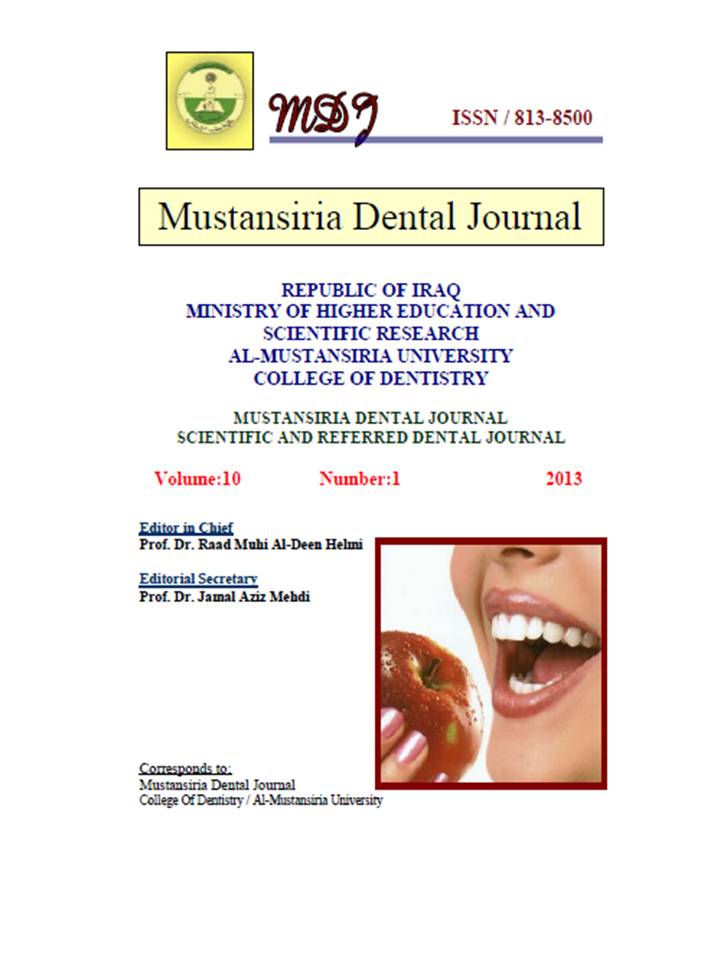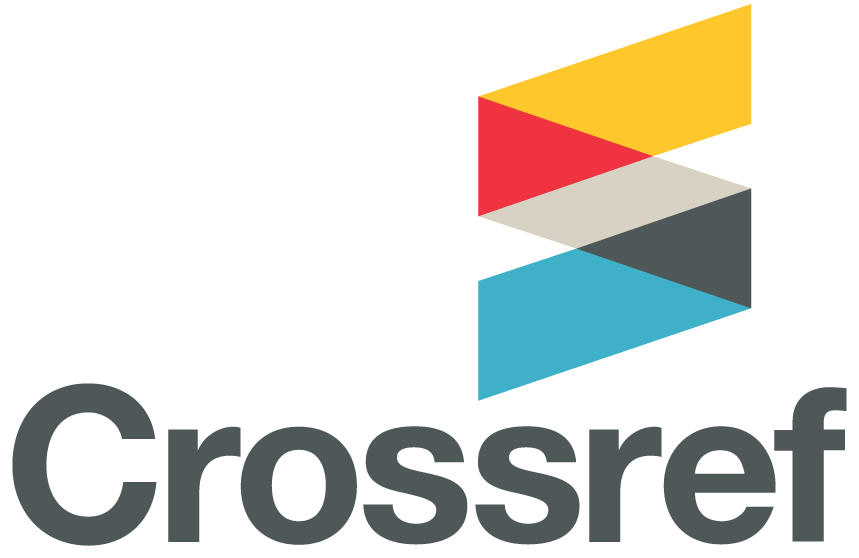Evaluation of Immediate post-extraction implants of 34 patients in Basrah province
DOI:
https://doi.org/10.32828/mdj.v10i1.190Keywords:
Key words: Immediate implant, osseointegration.Dental implantAbstract
The aim of this study was to evaluate the success rate of the immediate postextraction
implants without incision or primary flap closure.
Patients and Methods: The study included 34 patients in good general health,
referred to the department of oral surgery in the specialized center of dentistry in
Basra between August 2009 and July 2010, immediate post extraction implant
treatment 20(58.82 % ) female and 14(41.18%)male, aged 22 to 53 years with
mean age 32.85 . Each patient had a tooth that required extraction, and each had at
least 4 mm of bone beyond the root apex. After tooth extraction, the implants were
immediately placed without incision or flap elevation. Implant sites showing bone
bone defects or bone fenestrations, were excluded from this study. The secondstage
surgical procedure was performed4 months after the first procedure. The
following clinical parameters were evaluated at the time of implant placement and
at second stage surgery: peri-implant radiolucency and marginal bone loss, which
were evaluated radiographically.
Results: The postsurgical healing period was uneventful for all patients. Soft tissue
closure over the implant sites was achieved in1to 3 weeks after surgery at all sites.
At second stage surgery, no peri-implant bone defects were observed or detected
by probing. The soft tissue anatomy was considered clinically acceptable in all
patients.
Conclusions: Immediate post-extraction implant treatment is an implant alternative
with a survival rate similar to that of the conventional technique for implant
placement and enables preserving both the bone structure and gingival
architecture.

Downloads
Published
Issue
Section
License
The Journal of Mustansiria Dental Journal is an open-access journal that all contents are free of charge. Articles of this journal are licensed under the terms of the Creative Commons Attribution International Public License CC-BY 4.0 (https://creativecommons.org/licenses/by/4.0/legalcode) that licensees are unrestrictly allowed to search, download, share, distribute, print, or link to the full texts of the articles, crawl them for indexing and reproduce any medium of the articles provided that they give the author(s) proper credits (citation). The journal allows the author(s) to retain the copyright of their published article.
Creative Commons-Attribution (BY)








